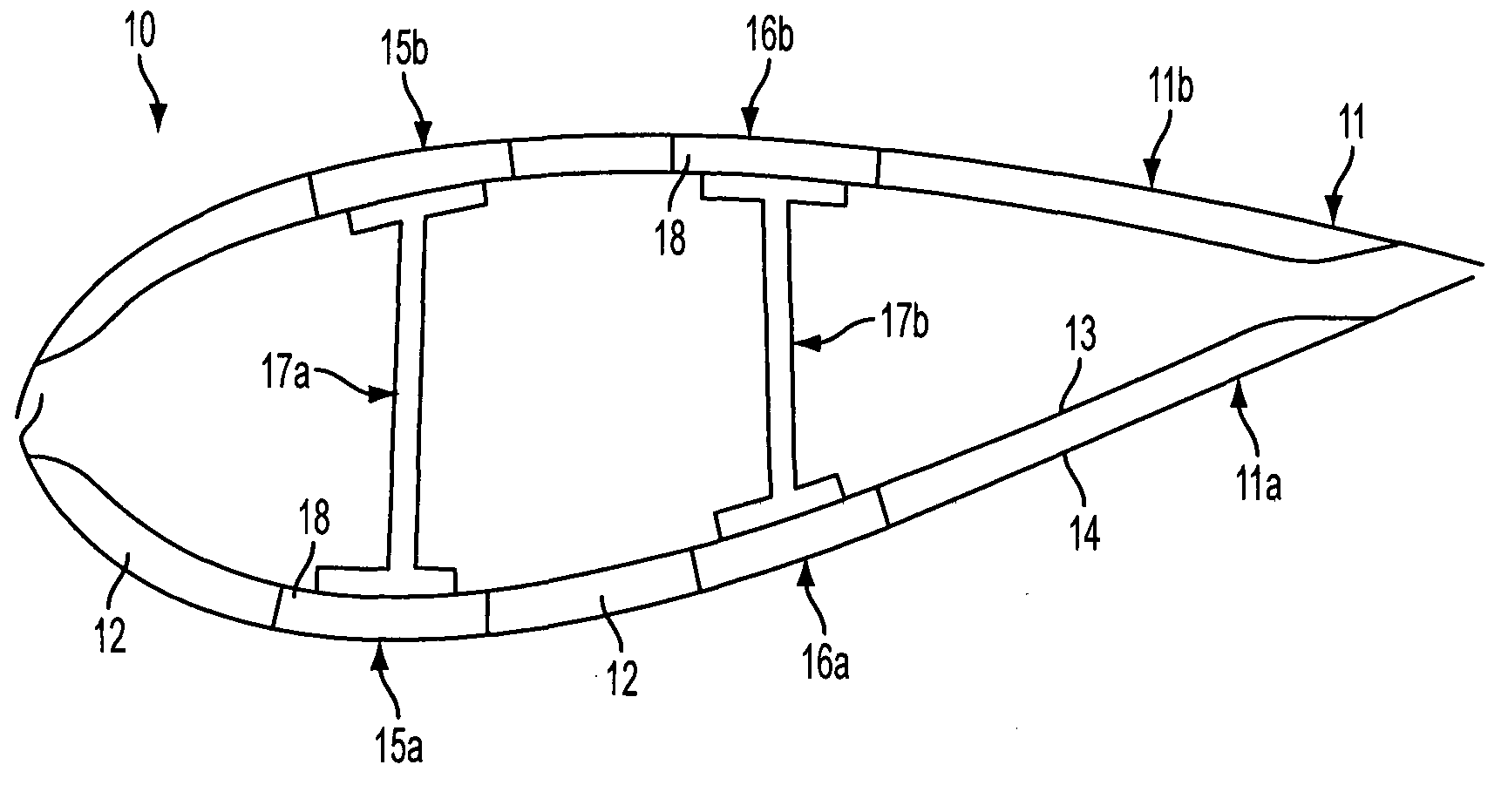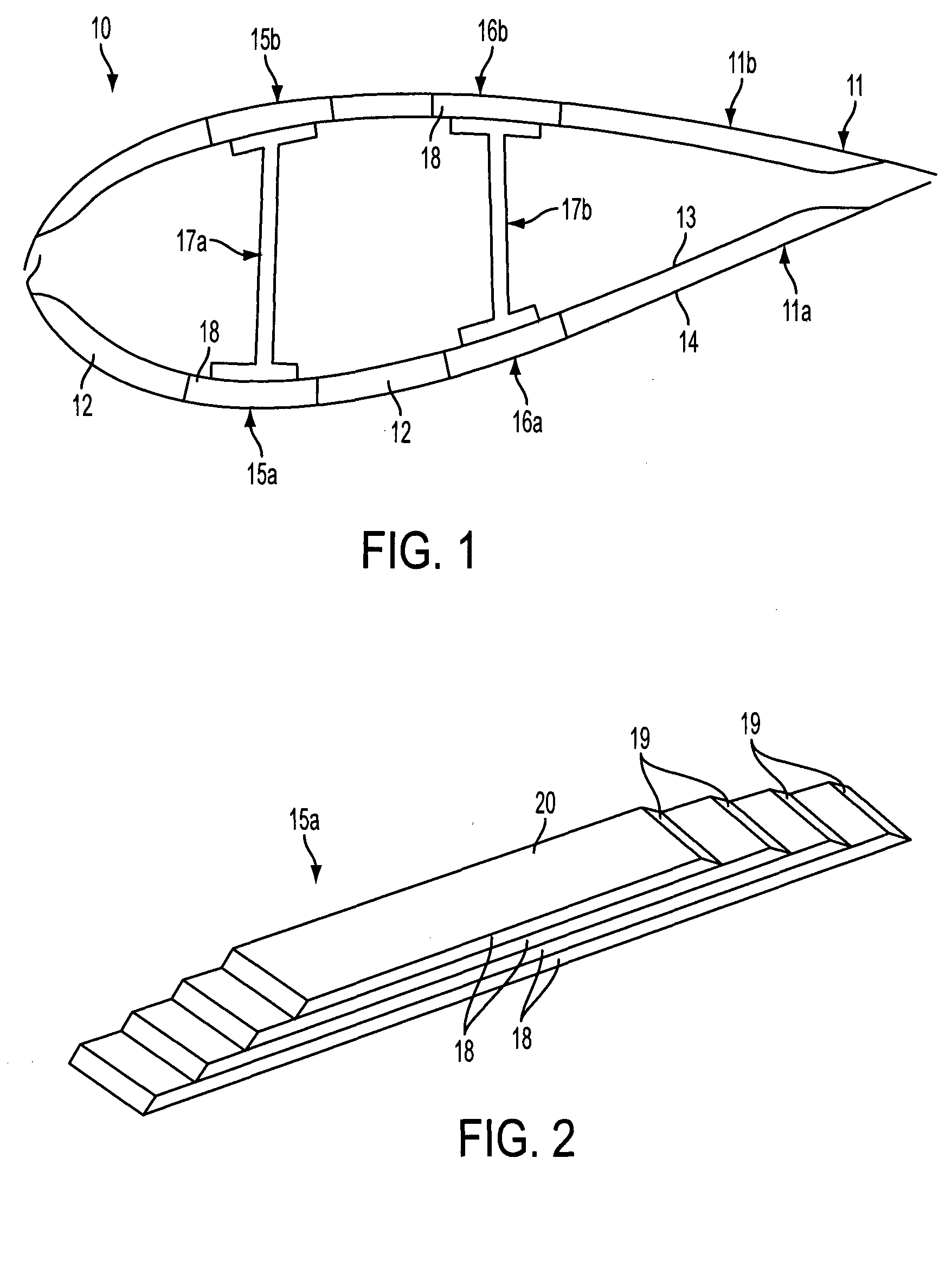Reinforcing strip for a wind turbine blade
a technology of wind turbine blades and reinforcement strips, which is applied in the direction of motors, applications, domestic articles, etc., can solve the problems of not being able to propagate through the regions of cured resin in the slots, and achieve the effect of reducing time and cost, and reducing the number of manufacturing steps
- Summary
- Abstract
- Description
- Claims
- Application Information
AI Technical Summary
Benefits of technology
Problems solved by technology
Method used
Image
Examples
second embodiment
[0091]A strip 232 according to the invention, in which grooves 254 are provided in the upper surface 236 of the strip 232, rather than the lower major 234 surface of the strip 232, will now be described with reference to FIGS. 13 to 18.
[0092]FIGS. 13 and 14 illustrate a spar cap 230 incorporating a plurality of strips according to the second embodiment of the invention. The spar cap 230 is of substantially the same form as the spar cap 30 of FIG. 3, being comprised of a plurality of stacked strips 232, and so will not be described in further detail to avoid repetition.
[0093]Each strip 232 is of generally the same form as the strip 32 illustrated in FIG. 5. In particular, the configuration of the upper and lower surfaces 234, 236, the tapered end portions 244 of the upper surface 234, and the transverse edges 246 are substantially the same, and will not be described again in detail to avoid repetition.
[0094]As shown in FIG. 15, the strips 232 according to the second embodiment compri...
first embodiment
[0096]As mentioned with regard to the first embodiment, the shape of the grooves 254 controls the shape of the corresponding slots 250. The slots 250 emerge in the lower surface 234 when the thickness of the strip 232 becomes less than the depth of the groove 254. Referring now to FIG. 18, due to the tapered walls 257 of the grooves 254, the width of the slots 250 varies. At the edge 246 of the strip 232, the slot 250 is at its widest and has a width equal to the width w′ at the mouth of the groove 254. The width of the slot 250 decreases as the slot 50 extends into the tapered end surface 244, until the slot terminates with a width that is equal to the width w″ of the base 255 of the groove 254. In the way, the slots 250 are generally ‘V’-shaped.
[0097]The strips 232 are integrated into the spar cap 230 using the resin-infusion process that has already been described above with reference to the first embodiment and so will not be described here to avoid repetition.
[0098]When a strip...
PUM
| Property | Measurement | Unit |
|---|---|---|
| thickness | aaaaa | aaaaa |
| distance | aaaaa | aaaaa |
| length | aaaaa | aaaaa |
Abstract
Description
Claims
Application Information
 Login to View More
Login to View More - R&D
- Intellectual Property
- Life Sciences
- Materials
- Tech Scout
- Unparalleled Data Quality
- Higher Quality Content
- 60% Fewer Hallucinations
Browse by: Latest US Patents, China's latest patents, Technical Efficacy Thesaurus, Application Domain, Technology Topic, Popular Technical Reports.
© 2025 PatSnap. All rights reserved.Legal|Privacy policy|Modern Slavery Act Transparency Statement|Sitemap|About US| Contact US: help@patsnap.com



